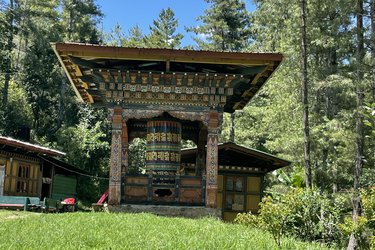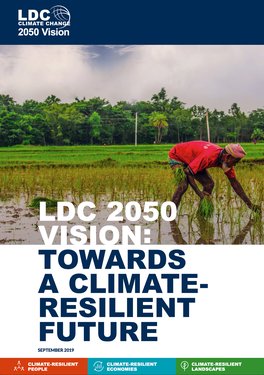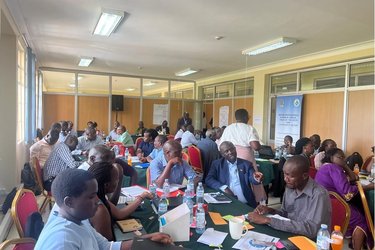

Authors: David Pertaub, Scovia Akot, Modou Cham, Momodou Wuri Jallow, Marthe Baro Ky, Didier Bako, Yamikani Idriss, Patrick Likongwe
When LDCs and donors sign up to the LIFE-AR Compact, they are making a commitment to working together to transform climate finance architecture in ways that are more effective, efficient and equitable. Five core principles lie at the heart of the Compact – Coordination, Finance, Planning, Capabilities and Governance.
LIFE-AR starts with the observation that business-as-usual approaches to coordination are lacking at every scale. At the international level, bilateral and multilateral donors engage with countries individually, in a top-down rather than collaborative approach. And at the national level, climate action in LDCs all too often remains fragmented. Coherence and collaboration are lacking between government ministries and programs, and non-government actors are engaged in a cursory manner, if at all. There is often a pronounced implementation gap at the subnational level, where local governments have little capacity for, or understanding of, integrated planning for climate risk.
Within LIFE-AR, Development partners commit to working together with LDCs to ‘reduce transaction costs and ensure mutual accountability behind LDC leadership’ (the Ask). This signals a real shift in the locus of power, putting LDCs themselves, not donors, in the driving seat of climate finance. It means making it much easier to access climate finance on terms that suit LDCs through collective negotiation (‘the Principle is: ‘working together on a common platform‘).
For their part, LDCs individually commit to working with ‘the whole of society to achieve a low-carbon, climate resilient future’ (the Offer). This means recognizing that effective climate action requires cross-sectoral integration and meaningful inclusion of non-government actors in decision making. It is a pledge to new ways of working and connecting with civil society at multiple levels, both horizontally (national-national, local-local) and vertically (national-local).
"We will work with the whole of society to achieve a low-carbon, climate-resilient future"

Since its launch, LIFE-AR has been working to challenge entrenched Donor-LDC power dynamics, reduce transaction costs and promote mutual accountability on delivering the commitments in the Compact.
LIFE-AR governance structure therefore set up a Board with equal representation from development partners and LDCs, and chaired by the LDC Climate Group. Decisions are unanimous which allows for greater collaboration and alignment between the parties. This close collaboration has achieved innovative features for the LDCs, such as the setting up of a pooled fund, consolidated and streamlined reporting, standard operating procedures (the SOPs), and more flexible funding arrangements.
During the Establishment Phase of LIFE-AR, every front runner country put in place governance arrangements (‘National Platforms ’) to help scope, design and test the institutional and financial structures for getting funding directly to the local level (known as the ‘delivery mechanisms’). LIFE-AR national platforms are made up of various committees and statutory bodies - each with a distinctive function, such as technical advice and support for GESI and MEL for example, strategic oversight, political legitimation and day-to-day coordination. The National platforms also comprise several sectoral ministries involved in climate policies, and participating in LIFE-AR implementation at various levels. This whole-of-government approach foster collaboration at the highest level and mainstreaming of adaptation polices.
LIFE-AR national platforms have become experimental laboratories for exploring genuinely novel and business-unusual ways of working between different whole of society actors.
In Uganda, NGOs working on climate change and national government have typically tended to work in silos. The task of co-designing the national LIFE-AR initiative has forged an altogether different form of open and productive collaboration with extensive cross-fertilisation and real debate. Strong team spirit has developed as NGOs such as ACTADE, Environmental Alert and Acord-U collaborated extensively with the Climate Change Department. Academia, led by Makerere University (representing LUCCC), chaired a multi-stakeholder working group with more than 30 people to design the delivery mechanism (the Decentralised Climate Finance (DCF) working group). Cooperation is at such a high level that government trusts these actors to deputise as spokespeople and trainers for LIFE-AR when the need arises; equally some NGOs now invite government representatives to contribute to their own internal meetings outside of LIFE-AR. As LIFE-AR gains traction, these new ways of working are propagating outwards and being adopted by other projects and even other ministries - in what could be described as a kind of ‘organisational osmosis’.
LIFE-AR is also bringing coherence and coordination to the activities of government departments which, although formally networked, have in practice been working independently of one another.
In The Gambia, the Department of Community Development (DCD) has been providing detailed technical assistance to local authorities to help them design local adaptation and climate resilience projects under the UNCDF Local Climate Adaptive Living Facility (LoCAL). However, due to persistent challenges in The Gambia’s decentralization process, LoCAL has remained institutionally disconnected from the country’s formal climate change coordination structures—including the National Climate Change Council, the Inter-Ministerial Committee, and the National Climate Change Secretariat, all housed within MECCNAR (the Ministry of Environment, Climate Change and Natural Resources).
The LIFE-AR initiative in The Gambia has worked to bridge this gap. LIFE-AR sits within MECCNAR and is fully integrated into national climate action structure. Building on the DCD’s existing capacity and experience—and in alignment with national decentralization arrangements—LIFE-AR adopted a LoCAL-Plus approach as its delivery mechanism, working in close partnership with DCD. As a result, LIFE-AR is fostering effective cross-sectoral collaboration between climate, planning, and local governance actors, building on existing capacity, and supporting the deepening of decentralisation in the country.
Bringing in non-government actors
LIFE-AR countries have tried to solve the issue of non-government actors representation by inviting representatives from umbrella organizations or NGO consortia that aggregate and channel the interests of the sector. In Uganda, the task team included Environmental Alert. In Burkina Faso, the SPONG (Permanent Secretariat of Non-Governmental Organisations) has been brought in.
Another strategy is to include prominent NGOs that have complementary skill sets – particularly in social inclusion. The can have formal roles in governance, or they can be brought into thematic working groups to share their particular expertise. For example, in Malawi, LEAD SEA chairs the task team. Renew is a standing team member in Bhutan. In Uganda, Acord-U is a national NGO with distinct experience in climate programming, in gender, and in environmental and human rights.
The Local Level and National-Local Linkages
LIFE-AR has also begun to transform relationships at the local/sub-national level by supporting cross-sectoral climate planning and by enabling meaningful participation in decision making by local communities.
In Burkina Faso, LIFE-AR has set up local technical teams that bring together cross-sectoral technical service experts (including MEL, GESI and youth) to work on climate issues in an integrated manner for the first time. They work alongside government-sponsored community structures (the COVED, or Local Monitoring and Development Committees) to determine community climate change priorities and incorporate them into official local development plans. Vertical linkages with the national-level LIFE-AR technical working group are also strong.
In Ethiopia, official guidelines for producing climate-resilient local government development plans exist but local governments lack the resources and technical capacity to prepare them. LIFE-AR’s entry point has been to strengthen the existing system. The Kebele Community Representative Committees were set up, consisting of community representatives as with 40% women, and 20% representing youth. National actors have worked closely with local government counterparts and KCRC to ensure communities' knowledge and priorities are reflected in investment plans and in long-term woreda climate smart development plans, from which sequenced investments could be selected.
In Uganda, LIFE-AR reinforces the existing legal mandate for climate coordination of the District Natural Resource Officer and has built capacity through a comprehensive ‘training of trainers’ program initially delivered by national government and NGOs/CSOs. Districts have planned and executed an ambitious approach to community mobilisation and consultation, to maximise reach and meaningful participation and representation of all sectors of the community. The model is now being replicated outside of LIFE-AR.
“Recently an affiliated NGO went to work in a non-LIFE-AR area. The community told them outright that they want the same level of participation as LIFE-AR, with the same parish planning model. And the NGO understood, because they’d been involved in the design process…. This is testimony to the fact that the word is spreading and others are adopting our approach.”
Scovia Akot, LIFE-AR Uganda Focal Point

‘In the LIFE-AR technical working group we have tried hard to ensure that the group is multi-stakeholder and multi-disciplinary so that all sectors or ministerial departments affected by climate change can really be involved…..
…..the group has become like a family. At any time we can ask someone for help, we can send an invitation to someone, even if the deadlines are short or at short notice and they will be available, because it is a matter of national interest.’
Didier Bako, LIFE-AR Burkina Faso, Alternate Focal Point
Many years of business-as-usual adaptation interventions have shown that externally driven, top-down approaches don’t work for LDCs. They fail to build lasting institutions, don’t strengthen local systems, and often bypass the knowledge and leadership of those most affected by climate change. LIFE-AR reimagines coordination as a driver of transformation — rooted in LDC leadership, whole-of-society collaboration, and long-term institution-building. Across countries, diverse actors who rarely work together — ministries, CSOs, local governments, academia — are co-designing solutions and building relationships that cut across silos and scales. At the global level, LDCs are shifting the climate finance architecture by acting collectively, reducing transaction costs, and asserting greater control through the LIFE-AR Board and pooled funding arrangements. Coordination, in this model, is not a technical fix — it is a political strategy to reclaim agency, redistribute power, and build the systems that LDCs actually need to respond to the climate crisis on their own terms.